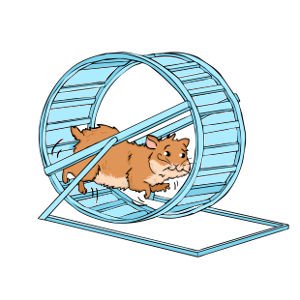The Key to Accountability is Proactivity
By Danish Qasim and Danya Shakfeh

“The definition of insanity is doing the same thing over and over again and expecting a different result.”
Habits are hard to break and the Muslim community has a bad habit regarding allegations of spiritual abuse. Different theories are thrown out, people speculate how the abuse could have been prevented, whether or not it occurred, and who are all the people to blame. Every time allegations enter the public realm, we treat the incident as if we have not learned any lessons from past incidents.
Without fail, the community finds itself asking the same questions, which we address throughout our site. The questions include “when should we believe victims?”, who do we trust?”, how to handle allegations of spiritual abuse, how to view knowledge we received from abusers, and due process.
So how do we stop being reactive and start being proactive? For one, we need to have the right systems in place so we are prepared for these allegations. We cannot just make general calls for “accountability” without understanding that accountability requires enforcement and agreement. For this very reason, we’ve published a Code of Conduct for Islamic Leadership along with a guide free for everyone to use. Another problem that people often complain about, and understandably so, is what when organizations release statements regarding allegations of spiritual abuse, the statements are often vague. The Code of Conduct will solve this because these organizations can refer to their own code. Instead of releasing vague statements that “X leader engaged in spiritual misconduct,” the organizations can refer to the Code of Conduct and refer to a specific violation. Lastly, we can forego the debate of ‘how bad’ the abuse was, because the conversation will be about code violation rather than gravity of abuse or sin.
At this point, the community, not just leaders, need to step up to the plate and put in place proactive systems. If you are a part of an organization or mosque, then demand that the organization adopt a Code of Conduct. If you are a board member of an organization, then take the Code of Conduct and propose it to your peers. There is a role we can all play.
Otherwise, we will continue repeating this same pathetic cycle and frankly, lead the next generation of Muslims into sheer disillusionment. We can blame abusive leaders all we want, but at the end of the day, if we don’t take the reins on this issue, we are complicit.
Additionally, the Code of Conduct will make violations actionable. These violations are not necessarily moral determinations that speak to whether someone is a good or bad person. They do not negate the good an individual has done, nor do they condemn someone’s overall being. A violation simply means that actions against an organization’s ethical code have taken place and the violator may be held accountable for it.
It’s high time to understand and take accountability seriously. Do not expect other community leaders to do it for you. In many cases of long standing abuse, senior leaders were directly involved in ostracizing and dismissing victims, in other cases they were fooled or inept. For more please read https://inshaykhsclothing.com/home/intro/why-people-dont-help/
Finally, we have to be bold and assertive. Show that spiritual placating and appeals to forgiveness where the abuse will continue will not sway you. In many cases, organizations will only take action if their reputation will suffer for not taking action or if they will be held liable. This will motivate them far more than a concern for doing the right thing. If organizations cover up abuse, members of the community can use the Code of Conduct to demonstrate a Board’s lack of commitment to the community and the organization’s hypocrisy. In some cases, there may be legal remedies too. The bottom line is that each organization needs to adopt a code of conduct so we move from relying on a personality to relying on a procedure
 What do we mean by “spiritual abuse?” Does it have a universal definition? What are actions that people often call forms of spiritual abuse, but are in fact, not? Danish Qasim wrote a primer in our introduction section:
What do we mean by “spiritual abuse?” Does it have a universal definition? What are actions that people often call forms of spiritual abuse, but are in fact, not? Danish Qasim wrote a primer in our introduction section: 